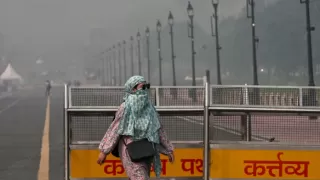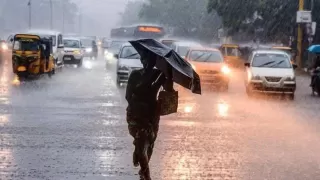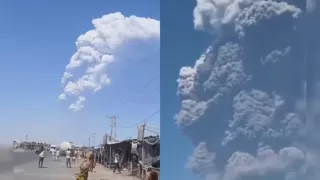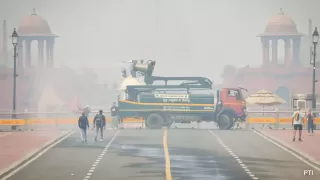Cyclone Montha began making landfall along India’s eastern coast late Tuesday, the Indian Meteorological Department (IMD) said, as the severe cyclonic storm pushed ashore from the Bay of Bengal with heavy rains and gusty winds. The system was observed about 100–120 kilometres south of Kakinada as it moved toward the coast and was expected to continue the landfall process for several hours.
Authorities issued the highest-level “red” alerts for multiple coastal districts and ordered precautionary closures and evacuations — tens of thousands of residents have already been moved to relief centres as warnings remain in effect through the night. Forecasts warned of very heavy to extremely heavy rainfall and the risk of flooding in low-lying areas of Andhra Pradesh and neighbouring states.
Landfall and Current Position
IMD bulletins confirmed the landfall process had started near the Kakinada–Machilipatnam stretch and that the cyclone remained close to the coast as it moved inland, with forward motion slowing as heavy rainbands wrap around the center. Meteorologists said the core of Montha would take several hours to cross the coastline, prolonging intense rainfall for coastal districts.
Observed sustained winds near the centre were forecast at roughly 90–110 kph (55–68 mph) with stronger gusts, enough to uproot trees, down power lines and cause storm surge in exposed coastal pockets. Authorities cautioned that sea waves could rise sharply along the shore where the cyclone made landfall.
Warnings, Evacuations and Shelters
State governments issued red alerts for many districts in Andhra Pradesh and extended heavy-rain warnings to parts of Telangana, Odisha and Chhattisgarh; schools and colleges were ordered shut as a precaution. Disaster agencies activated relief plans and opened hundreds of camps and school shelters to accommodate evacuees.
So far, official tallies reported mass movements: Andhra Pradesh said around 38,000 people were evacuated to relief camps while Odisha moved roughly 32,000 from vulnerable locations — numbers that emergency teams continued to update as the situation evolved. Local authorities urged fishermen to stay ashore and advised residents in low-lying zones to follow evacuation orders.
Impact on Transport, Infrastructure and People
Transport services were disrupted: flights and some train services were delayed or cancelled, and reports from coastal districts described flooded roads, uprooted trees and power outages as gusts and rain bands reached populated areas. Local officials reported injuries and at least one fatality in early impact reports from low-lying coastal communities.
Relief teams — including NDRF and state disaster response forces — were deployed to assist with evacuations, medical aid and restoration of essential services; authorities also prepared emergency supplies and rescue boats where needed. The state set up thousands of relief beds and dozens of temporary shelters to house those displaced.
Agriculture, Damage and Local Outlook
Officials warned that standing crops across large tracts of coastal Andhra Pradesh were at risk from flooding and wind damage; preliminary estimates and agricultural advisories suggested significant agricultural losses were possible in paddy and horticulture areas. Farmers in low-lying fields were urged to move livestock and harvest what they could ahead of inundation.
Damage assessments and the full humanitarian toll were expected to become clearer only after the cyclone’s core moved inland and rains eased; state agencies said they were conducting hourly impact assessments and mobilising resources to reach worst-hit pockets.
Climate Context and Longer-Term Risks
Climate scientists and meteorologists noted that warming ocean temperatures are linked to stronger and more frequent intense tropical storms in the region, a trend that raises long-term flood and cyclone risk for India’s densely populated eastern coast. Experts say storms drawing energy from warmer seas are likelier to intensify rapidly, increasing the challenges for early warnings and disaster response systems.
India, one of the world’s most climate-vulnerable nations, faces a rising threat from such extreme weather events. In recent years, the country’s eastern coast has seen a growing number of severe cyclones, underscoring the urgent need for stronger coastal infrastructure, preparedness and global action on climate change.
Also Read: What to Expect as Comet 3I/ATLAS Nears the Sun Closest



























